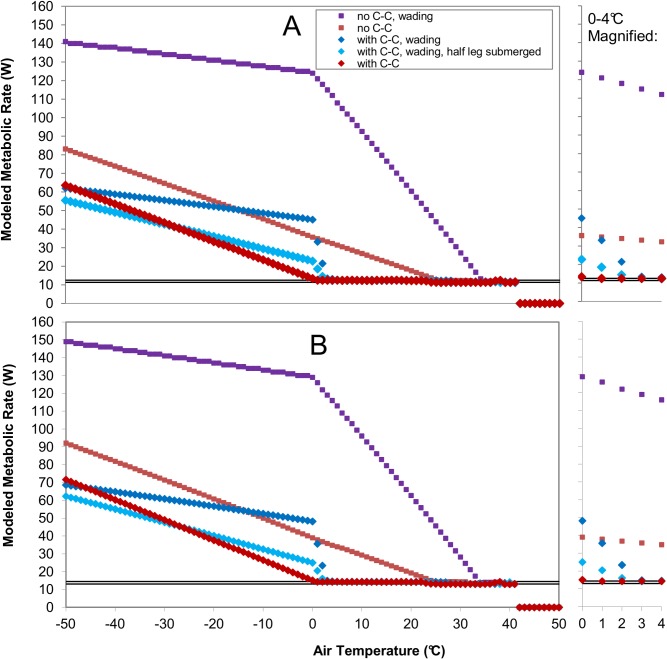Fig 5. Modeled metabolic rates for two Whooping Cranes across a range of air temperatures in metabolic-chamber-like environmental conditions, with and without legs submerged in water (“wading”), and with and without counter-current heat exchange (“C-C”) in legs.
Metabolic rates modeled using morphological and physiological properties of (A) the female crane and (B) the male crane measured in this study. Horizontal lines show ±5% of basal metabolic rate (Table 2) for each crane. The model treats metabolic rates within this range as basal metabolic rate. (See Methods section of main text for explanation.) Legs submerged in water are completely submerged unless otherwise noted in the key. Water temperatures were set equal to air temperatures down to a temperature of 0°C (ice water), below which water would freeze. When counter-current heat exchange in legs was modeled, leg temperatures were set to 1°C above ambient temperature. Leg temperatures were allowed to increase farther above air temperature for thermoregulation when the model indicated heat stress. A minimum value of 3°C and maximum value of core temperature for other body parts (40.7°C) was set to prevent unrealistically high or low (freezing) leg temperatures.

